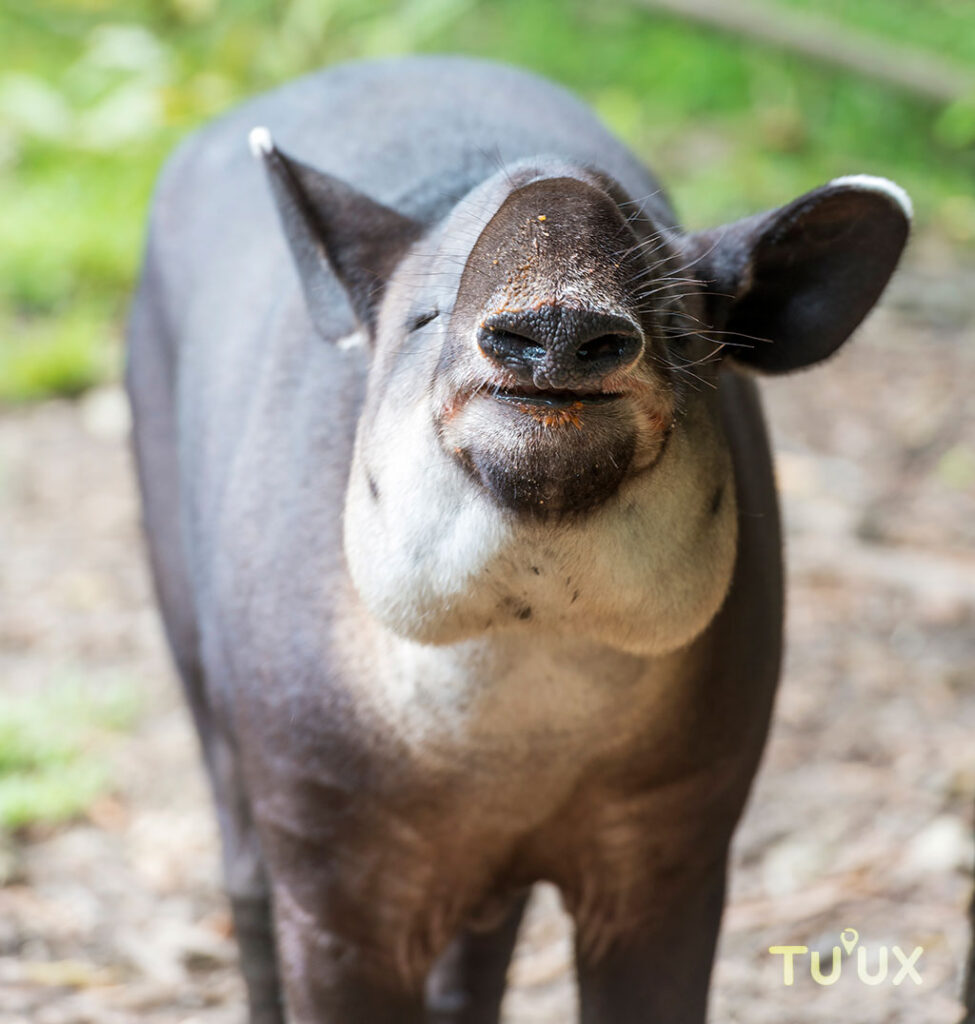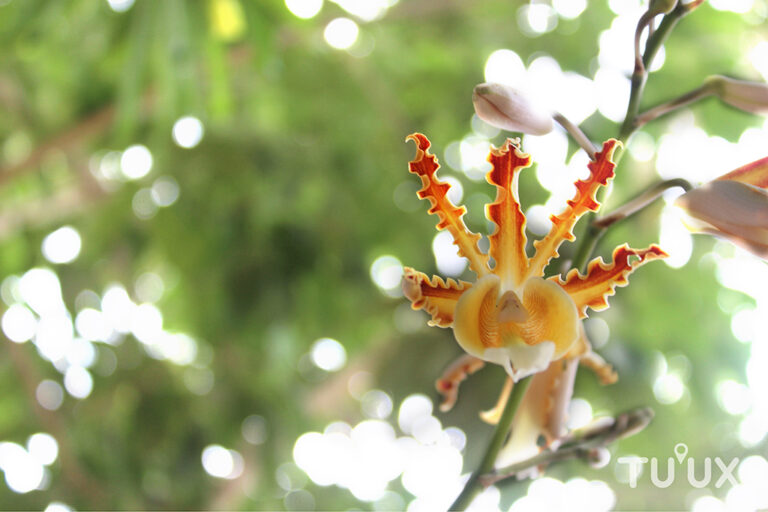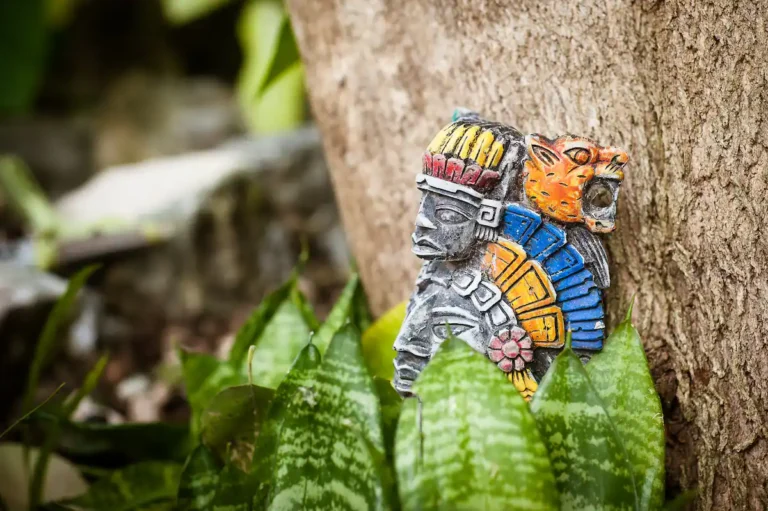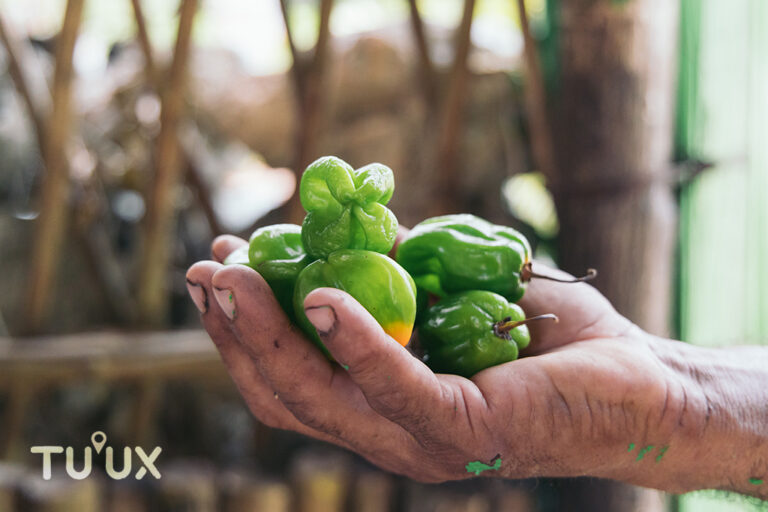TAPIR
🐾 El Tapir Centroamericano: Un Tesoro Natural en Quintana Roo
En los exuberantes bosques tropicales y humedales de Quintana Roo, el tapir centroamericano (Tapirus bairdii) se alza como una de las especies más emblemáticas de la región. Este majestuoso mamífero —también conocido como tapir de Baird— no solo es el más grande de Mesoamérica, sino que cumple un rol fundamental como regenerador natural de los ecosistemas.
🌿 Características del Tapir Centroamericano
El tapir centroamericano puede medir hasta 2 metros de largo y pesar entre 150 y 300 kilogramos. Su cuerpo es robusto, con patas cortas que le permiten moverse silenciosamente entre la vegetación densa del sotobosque.
Su característica trompa prehensil, una fusión del labio superior y la nariz, es una herramienta versátil que utiliza para alcanzar frutas, hojas y tallos. De pelaje marrón oscuro y bordes blancos en las orejas, suele llevar una vida solitaria y es de hábitos principalmente nocturnos.
Además de su comportamiento discreto, destaca por ser un gran dispersor de semillas, lo que lo convierte en una pieza clave para la regeneración de los bosques tropicales.
🏞️ Hogar en Quintana Roo y Mahahual
En Quintana Roo, este mamífero encuentra su santuario en áreas como la Reserva de la Biosfera de Sian Ka’an, así como en selvas cercanas a Mahahual, donde se han registrado avistamientos ocasionales en su hábitat natural.
Mahahual, conocido por su armonía entre mar y selva, representa un punto estratégico para la conservación de especies. Aquí, el tapir coexiste con jaguares, monos aulladores y cientos de especies de aves, demostrando que la vida silvestre aún encuentra refugio frente al turismo creciente, siempre que este se practique de forma responsable.
⚠️ Amenazas a su Supervivencia
A pesar de su importancia ecológica, el Tapirus bairdii se encuentra en peligro de extinción según la UICN. Entre las principales amenazas destacan:
- 🏗️ Deforestación: El avance de la agricultura, infraestructura turística y expansión urbana fragmenta su hábitat.
- 🔫 Caza furtiva: Aunque su caza está prohibida, aún es perseguido en algunas zonas por su carne o por supersticiones.
- 🌡️ Cambio climático: Las alteraciones en el régimen de lluvias y las temperaturas impactan negativamente en los ecosistemas donde habita.
🌱 Esfuerzos de Conservación
Diversas organizaciones trabajan activamente para asegurar el futuro del tapir centroamericano:
- 🛤️ Corredores biológicos: Permiten el desplazamiento seguro entre áreas protegidas.
- 📚 Educación ambiental comunitaria: Fomenta la empatía y el respeto hacia la fauna silvestre.
- 🔬 Monitoreo y ciencia ciudadana: Estudios y avistamientos documentados son esenciales para afinar estrategias de conservación.
🌳 El “Jardinero del Bosque”
El tapir es apodado el jardinero del bosque por su capacidad de dispersar semillas a lo largo de grandes distancias. Gracias a él, muchas especies vegetales logran reproducirse, lo que mantiene la biodiversidad y resiliencia de los ecosistemas selváticos.
🙌 ¿Cómo Puedes Ayudar?
Tú también puedes ser parte de su conservación. Aquí algunas formas de contribuir:
- 🏝️ Participa en actividades de ecoturismo responsable.
- 🐘 Apoya proyectos de conservación locales en Quintana Roo.
- 📢 Comparte información sobre el tapir y promueve su protección en redes sociales y tu comunidad.
🌎 Conclusión
El Tapirus bairdii no solo es una joya biológica del Caribe mexicano, sino también un símbolo de la delicada armonía entre los seres vivos y su entorno. Preservarlo es preservar los bosques, el agua y la vida misma en lugares como Mahahual.
Cuidar del tapir centroamericano es también cuidar de nosotros.



In the lush tropical forests and wetlands of Quintana Roo, the Central American tapir (Tapirus bairdii) stands out as one of the most iconic and essential species for regional biodiversity. Also known as Baird’s tapir, this majestic mammal is the largest in Mesoamerica and plays a crucial role in preserving the ecosystems of this Mexican state.
Characteristics of the Central American Tapir
The Central American tapir can grow up to 2 meters long and weigh between 150 and 300 kilograms. Its sturdy body, short legs, and prehensile snout enable it to navigate the dense undergrowth with ease. This herbivore has a varied diet of fruits, leaves, and stems, making it an indispensable seed disperser for forest regeneration.
With dark brown fur, white-edged ears, and a generally solitary lifestyle, the tapir occasionally appears accompanied by its young. Its flexible snout, an extension of its upper lip and nose, is a vital tool for accessing food in hard-to-reach places.
A Home in Quintana Roo and Mahahual
Quintana Roo, known for its natural richness and unique landscapes, is home to significant populations of the Central American tapir. Protected areas such as the Sian Ka’an Biosphere Reserve and the surroundings of Mahahual provide vital refuges where tapirs find food, water, and space to reproduce.
Mahahual, in particular, is one of the places where tapirs can be spotted in their natural habitat. This destination is not only famous for its beaches and coral reefs but also for being a haven where native wildlife, such as the Central American tapir, plays a key role in the local ecosystems.
The presence of tapirs in these areas serves as an indicator of environmental health. These creatures require large tracts of intact forest, directly linking their survival to the conservation of the region’s biodiversity.
Threats to Tapir Survival
Despite its ecological significance, the Central American tapir faces numerous threats in Quintana Roo, including:
- Deforestation and habitat loss: Agriculture, urbanization, and unsustainable tourism fragment their natural environment.
- Poaching: Although protected under Mexican law, tapirs are still hunted in some communities for their meat and hide.
- Climate change: Shifts in rainfall and temperature patterns affect the ecosystems they inhabit.
Conservation Efforts in Quintana Roo
Local and international organizations are working to protect Tapirus bairdii through various initiatives:
- Creation of biological corridors: These connect protected areas, enabling tapirs to move freely.
- Environmental education: Community programs promote respect and awareness of this species.
- Scientific monitoring: Studies on tapir behavior and distribution help strengthen conservation strategies.
The Role of the Tapir in the Ecosystem
The Central American tapir is known as the “gardener of the forest” due to its vital role in seed dispersal. As it travels long distances, it helps regenerate tropical forests, contributing to the biodiversity and stability of ecosystems.
How Can You Help?
Protecting the Central American tapir and its habitat in Quintana Roo requires collective effort. Here are some ways you can contribute:
- Choose sustainable tourism activities.
- Support conservation programs led by local organizations.
- Spread awareness about the importance of tapirs and the need to protect them.
Conclusion
The Tapirus bairdii is more than just an inhabitant of Quintana Roo’s forests; it is a living symbol of the region’s natural wealth and a guardian of biodiversity. Its presence in places like Mahahual highlights the importance of protecting this species and its habitat. Safeguarding the tapir ensures not only its future but also that of the ecosystems that make Quintana Roo a unique environmental treasure.







